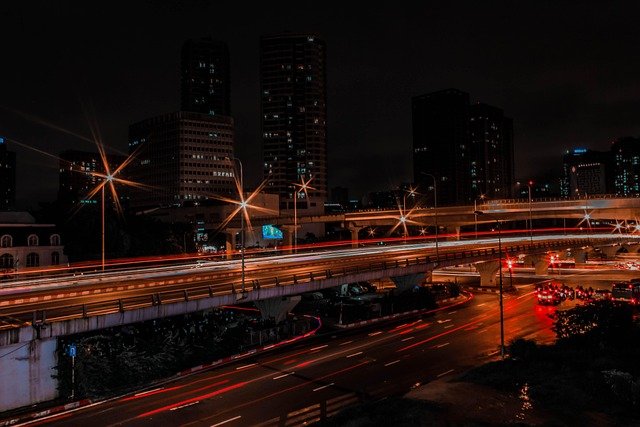Dusk-to-dawn photocell sensors make sure that lights automatically switch on and turn off when daylight returns or when it gets dark, But when it comes to installing these sensors, property owners and project managers often face a difficult decision: should you handle it yourself, or hire a professional electrician? both DIY photocell installation and professional services have their advantages and limitations, the right choice depends on the scale of the project and the performance you expect from the system.
In this article, we’ll break down the benefits and risks of each approach, provide a clear comparison, and help you determine when it’s best to call in a professional.


Benefits of DIY Installation
For small-scale outdoor lighting needs, many homeowners find that DIY photocell installation is achievable and rewarding, with some basic tools and a reliable dusk-to-dawn wiring guide, it’s possible to install sensors that provide consistent and efficient operation:
Cost Savings
One of the biggest advantages of doing it yourself is saving on labor costs as hiring a professional can be expensive for small projects like a backyard or garden setup, if you only need to control a few lights, installing the photocell sensor on your own can significantly cut costs.
Educational Value
DIY projects provide hands-on experience, by wiring a sensor yourself, you’ll get an understanding of how outdoor lighting systems work and this knowledge will help you with future troubleshooting, such as identifying faulty wiring connections.
Simple Projects Are Feasible
Pre-wired and plug-and-play sensors offered by Lead-Top are designed for homeowners with minimal electrical experience, these products come with clear instructions, letting you easily integrate sensors into pathway lights, porch fixtures, or garden illumination.
Flexibility and Control
When you handle the installation yourself, you decide where to place the sensor how to orient it, and which fixtures to connect. This flexibility is great for small projects where personal preferences matter with functionality.
In short, for basic residential projects, DIY photocell installation can be a practical and cost-effective choice.
Risks of DIY Installation
While DIY projects can save money, they come with significant risks, installing a photocell sensor involves working with electrical wiring, which introduces potential hazards if not done correctly:
Electrical Hazards
Improper wiring can result in electric shocks or even fires, a simple mistake like connecting wires incorrectly or failing to ground the system can compromise both safety and performance
Poor System Performance
Many homeowners face flickering lights or sensors that switch on and off at the wrong times, without professional expertise, it’s easy to misinterpret instructions from a dusk-to-dawn wiring guide or overlook environmental factors, these errors can cause unnecessary maintenance headaches
Limited Knowledge of Electrical Codes
Most homeowners are not familiar with local building and electrical codes, and failing to meet these standards can make your installation unsafe, In some regions, unlicensed work may even void insurance coverage in the event of damage
Environmental Challenges
DIY installers may not account for long-term durability as outdoor environments expose sensors to rain, snow, dust, and temperature fluctuations and without waterproofing and correct placement, a sensor may stop working after only a few months.
DIY projects are best reserved for low-voltage, small-scale systems. For anything beyond that, the risks begin to outweigh the savings.
When to Call a Professional Electrician
For larger or more complex projects, a professional outdoor lighting setup is the safer and more reliable option as certified electricians bring not only technical knowledge but also experience in handling high-voltage systems, multiple fixtures, and compliance requirements:
Municipal Street Lighting Networks
Streetlights are critical infrastructure, and a single malfunctioning sensor can leave entire blocks in darkness, creating safety hazards, Professionals make sure of consistent wiring, sensor placement, and compliance with municipal standards
Commercial Campuses and Parking Lots
Large properties require uniform lighting to make sure of safety and efficiency, professionals handle sensor calibration and complex layouts that DIY installers mostly struggle with
Multi-Sensor or High-Voltage Systems
When multiple dusk-to-dawn sensors are connected, synchronization becomes key. Professionals know how to wire systems that prevent false triggers, uneven lighting, or energy waste, similarly, high-voltage LED drivers demand expertise that only licensed electricians can provide
Guaranteed Safety and Compliance
A professional installation makes sure that grounding, waterproofing, and code compliance are done right, which confirms not just functionality but also reduced maintenance
At last, for any large-scale or high-stakes project, a professional outdoor lighting setup is not optional, it’s essential.

Cost Comparison: DIY vs Professional Setup
Cost mostly drives the decision between DIY and professional installation, but upfront expenses aren’t the whole story:
DIY Installation Costs
• Sensor purchase: Moderate, depending on brand and type
• Tools: If not already owned, you may need to buy items such as wire strippers, voltage testers, or waterproof sealants
• Labor: Free, since you’re doing it yourself
DIY installation reduces initial costs but increases the risk of mistakes, if the sensor malfunctions, the cost of replacement or repeated maintenance may end up exceeding professional fees.
Professional Installation Costs
• Labor: Higher upfront, mainly for large properties
• Equipment: Professionals have specialized tools and safety gear
• Service Guarantee: Many electricians provide warranties or service guarantees
Long-Term ROI
Professional setups reduce downtime and minimize maintenance needs, for municipal and commercial projects, the return on investment is greater with professional work, while DIY is great for small projects due to lower upfront costs, large projects almost always benefit financially from hiring professionals.
Lead-Top Solutions for Every Need
Recognizing the vast needs of property owners, Lead-Top gives solutions for both small-scale and professional projects:
- For homeowners, Lead-Top offers DIY-friendly photocell sensors that are pre-wired and designed for simple plug-and-play use. These products allow for easy integration without extensive electrical knowledge
- For larger or commercial projects, Lead-Top gives professional-grade sensors built to withstand demanding environments, these sensors are engineered for compatibility with high-voltage systems and complex networks, ensuring reliable long-term performance
By catering to both audiences, Lead-Top makes it easier to choose the right product based on your project size and requirements.
References:







